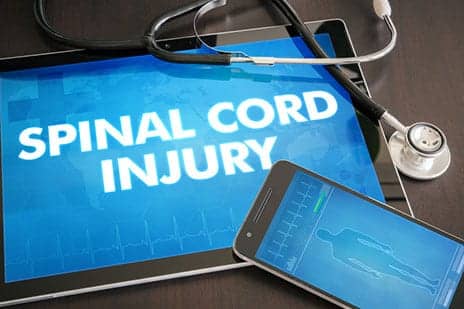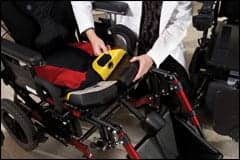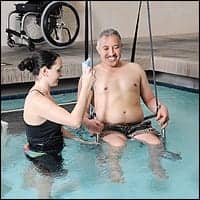Transplanting V2a interneurons into an injured spinal cord may someday be able to help patients paralyzed from a high-level spinal cord injury breathe without a respirator, researchers suggest.
Researchers from Drexel University College of Medicine and the University of Texas at Austin report improved respiratory function in mice with spinal cord injuries after successfully transplanting a special class of neural cells, called V2a interneurons.
Their study was published recently in the Journal of Neurotrauma.
“Our previous study was one of the first to show that V2a interneurons contribute to plasticity, or the ability of the spinal cord to achieve some level of self-repair. This study capitalized on those findings by demonstrating that we can grow these cells from stem cells, that they survive in an injured spinal cord, and that they can actually improve recovery,” says Michael Lane, PhD, an assistant professor of neurobiology and anatomy in the College of Medicine and the study’s principal investigator, in a media release from Drexel University.
In a study published in 2017, Lane and his colleagues found that weeks after injury, the spinal cord recruits V2a interneurons, which become wired into the “phrenic” circuit in the spinal cord that controls the diaphragm (an essential muscle for breathing). In their more recent study, the researchers explored whether transplanting more V2a cells into the injured spinal cord could enhance plasticity and lead to longer-lasting outcomes.
Lane explains in the release that identifying specific cell types that will repair breathing (or any other symptom), rather than transplanting a heterogeneous population, is key to effective treatment.
To test their hypothesis, the Drexel team collaborated with Shelly Sakiyama-Elbert, PhD, a cellular engineer at the University of Texas, to differentiate embryonic stem cells into V2a interneurons and combine them with neural progenitor cells from a rodent spinal cord. Once combined, the V2a cells were transplanted into 30 animals with high cervical moderate-severe injuries.
One month following transplantation, the donor cells had survived and become mature neurons in all 30 animals. Recording activity of the diaphragm muscle, the researchers found that breathing significantly improved in the animals that had received V2a interneurons compared to the controls, the release explains.
“Even this incremental difference reassures us that we have identified a cell type to really concentrate on, and that we should continue to investigate their potential even further,” states Lyandysha Zholudeva, the study’s lead author and a doctoral candidate in the College of Medicine.
Moving forward, the researchers plan to continue to determine how to best optimize the transplant dose, growth, and connectivity of V2a cells in the injured spinal cord. Lane said the potential contribution of V2a cells to functional recovery could be enhanced with rehabilitation, neural-interfacing and activity-based therapies.
“For now, we’ve focused on one cell, and one time-point after injury, so there is more work still to be done,” Lane concludes in the release. “But it is a big advance—we have at least one cell that contributes to recovery and one day, that may lead to better treatments.”
[Source(s): Drexel University, Science Daily]





